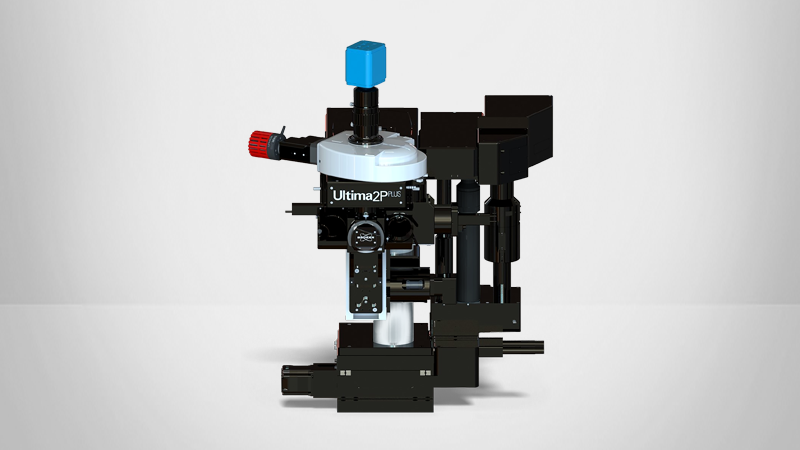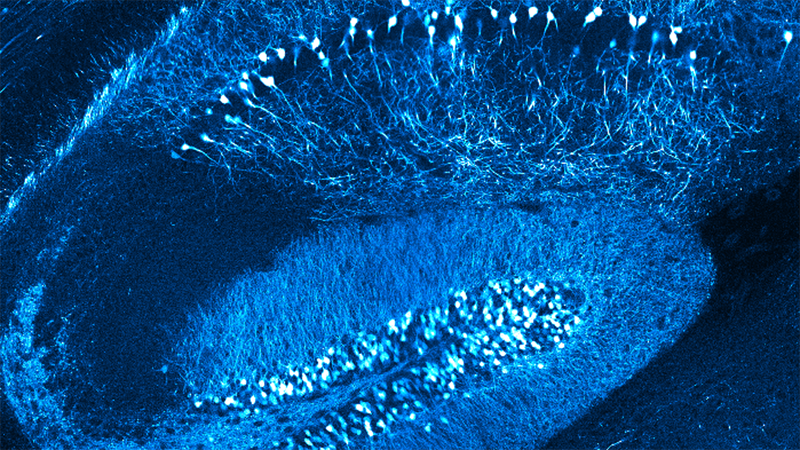

Advanced Multilayered Solutions for Successful Calcium Imaging in Neuroscience
One-photon and two-photon technology for multilayer insights and calcium imaging.
During this webinar, 1P and 2P imaging experts discuss various approaches to advanced neuroscience research. Hear about the nVue system, a dual-color miniscope, and NeuraLeap, a digital micromirror device (DMD) focusing module, for the Ultima 2Pplus multiphoton microscope.
Dive into the future of neuroscience research!
Watch this on-demand webinar to hear unique perspectives on one-photon and two-photon imaging and learn about the latest indispensable tools available for scientists.
Find out more about the technology featured in this webinar or our other solutions for calcium imaging:
Part 1: Layering Multiple Brain Signals with Dual Color Imaging
In the first part of this webinar, Dr. Brice Tiret unveils Inscopics's newest nVue System, which is the world's first commercial dual-color miniature microscope. Experience how its high sensitivity for shallow and deep brain imaging and the capability for longitudinal studies revolutionize neural imaging in freely behaving animals. Learn about the miniscope integrated solution, including surgical tools, data analysis software, and expert support. We'll also introduce IDEAS, a cloud service for secondary data analysis.
Part 2: Ultrafast Z Focusing and Variable Optical Mixing with Bruker's NeuraLeap
In the second part of this webinar, Dr. Kevin Mann (Bruker) also discusses NeuraLeap for the Ultima 2Pplus multiphoton microscope. Discover how this new digital micromirror device (DMD) focusing module combines groundbreaking speed with optical precision and offers the most complete multiphoton system for 2P functional imaging needs.
Featured Products and Technology
Speakers
Brice Tiret, Ph.D., Senior Product Manager, Inscopix
Brice holds a Bachelor's in Chemical and Biomedical Engineering from École Polytechnique de Montréal and a PhD in Medical Physics from École Paris-Saclay in France. He has worked on brain metabolism imaging using MRI and in vivo MR spectroscopy, where he developed pulse sequences for X-nuclei imaging. He also worked on self-writing differential equations to create metabolic models and carbon 13 labelling protocols for mice and rats. Brie did his postdoc with Myriam Chaumeil at UCSF, where he used 13C hyperpolarized spectroscopy to study neuroinflammation in TBI and MS murine models. In his previous commercial venture, he worked in Customer Success and supported new Product Development of nanoparticle imaging at Magnetic Insight. Brice is based in Mountain View and is instrumental in driving new product management initiatives for Inscopix miniscope platforms.
Kevin Mann, Ph.D., Applications Scientist, Bruker
Dr. Kevin Mann received Ph.D. degree from the University of California, Berkeley under the guidance of Dr. Kristin Scott where he studied fundamental behaviors in Drosophila using genetics, multiphoton microscopy, and electrophysiology. Next, he moved on to postdoctoral training in the laboratory of Dr. Tom Clandinin at Stanford University. Collaboratively he developed a method for whole-brain calcium imaging to detail the intrinsic functional neuronal network in Drosophila.


